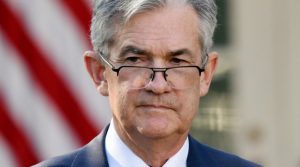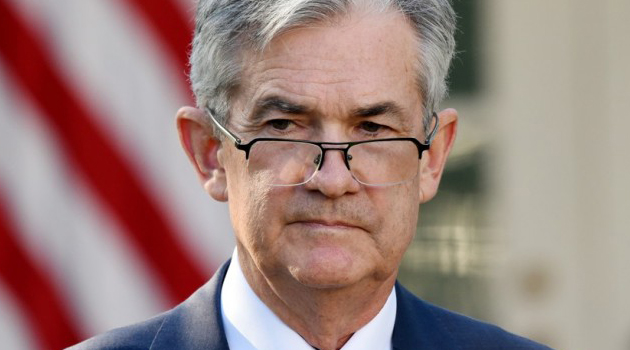Fed Indicates it Will Let Inflation Run Above 2 Percent Goal for ‘Temporary Period’

Federal Reserve officials would be content to let inflation briefly run above their 2 percent target as the economy continues to recover, according to minutes from the central bank’s most recent meeting.
Following the May 1-2 session, the policymaking Federal Open Market Committee said it wasn’t raising rates yet but added the word “symmetric” to describe its inflation goal. Market participants since have puzzled over what the change in language might imply.
The summary released Wednesday indicates a substantial level of debate over how the Fed should approach inflation. The minutes also pointed to an interest rate hike at the June meeting amid debate over how close the Fed might be getting to the end of this rate-hiking cycle.
While the general sentiment was that inflation would continue to rise toward the 2 percent target, there was disagreement over how confident the Fed should be after years of undershooting, and what that would mean to policy. However, there seemed to be agreement that after years of subpar growth and low inflation, allowing the economy to rev up a little would be appropriate.
“A few participants commented that recent news on inflation, against a background of continued prospects for a solid pace of economic growth, supported the view that inflation on a 12-month basis would likely move slightly above the Committee’s 2 percent objective for a time,” the minutes said. “It was also noted that a temporary period of inflation modestly above 2 percent would be consistent with the Committee’s symmetric inflation objective and could be helpful in anchoring longer-run inflation expectations at a level consistent with that objective.”
‘Symmetric’
“Symmetric” was mentioned at least nine times in the minutes.
The Fed’s preferred inflation gauge, the core personal consumption expenditures index, currently is at 1.9 percent, while the headline rate including energy and food prices is at 2 percent. Fed officials described wage pressures as “moderate” though it noted there has been more pressure in industries where labor supply is tightening.
Fed officials see 2 percent inflation as a level that sustains economic growth without putting too much upward pressure on prices.
After seven years of keeping its benchmark interest rate near zero, the FOMC began raising rates in December 2015, with the current target range at 1.5 percent to 1.75 percent.
As the economy has seen growth above its recovery trend and inflation inches its way toward the Fed’s goal, market participants have been speculating on how quickly the Fed will continue to hike and when it will stop. A few members stated that the Fed is getting close to its “neutral” goal of setting a rate that is neither constrictive nor overly expansionary to growth.
Though Fed officials indicated in March that a total of three rate hikes this year were likely, traders in the fed funds futures market in recent days briefly put chances of a fourth hike above 50 percent. That probability has since declined to about 43 percent.
The minutes indicate that central bank officials remain determined to keep increasing rates, but with the gradual approach that it has repeatedly pledged to take.
June hike?
“Most participants judged that if incoming information broadly confirmed their current economic outlook, it would likely soon be appropriate for the Committee to take another step in removing policy accommodation,” the minutes said in an indication that another hike is likely soon. Markets already had been pricing in a 95 percent chance of a quarter-point move at the June FOMC session, followed by another increase in September.
The Fed’s rate is tied closely to most forms of consumer debt.
Along with the approach to inflation, some Fed officials also suggested that changes will be coming to what has become boilerplate language in post-meeting statements.
Specifically, those members said that as rate hikes continue, adjustments may have to be made to phrasing that the “federal funds rate is likely to remain, for some time, below levels that are expected to prevail in the longer run” and another phrase that for years has said “the stance of monetary policy remains accommodative.”
However, the minutes also noted that members “expressed a range of views” on how policy should proceed.
Positive economic outlook
On the economy, committee members said their opinions had changed little as they expect continued progress despite some signs of softening in the first quarter.
There was concern expressed over trade and fiscal issues, with Fed business contacts expressing “concern about the possible adverse effects of tariffs and trade restrictions, including the potential for postponing or pulling back on capital spending.”
The outlook otherwise was positive.
“They noted a number of economic fundamentals were currently supporting continued above-trend economic growth; these included a strong labor market, federal tax and spending policies, high levels of household and business confidence, favorable financial conditions, and strong economic growth abroad,” the minutes said.
As things progress, “further gradual increases” in rates would be possible without disrupting the recovery and while sustaining the “symmetric” inflation goal.
Courtesy : CNBC
Photo : South China Morning Post
[social_warfare buttons=”Facebook,Pinterest,LinkedIn,Twitter,Total”]



